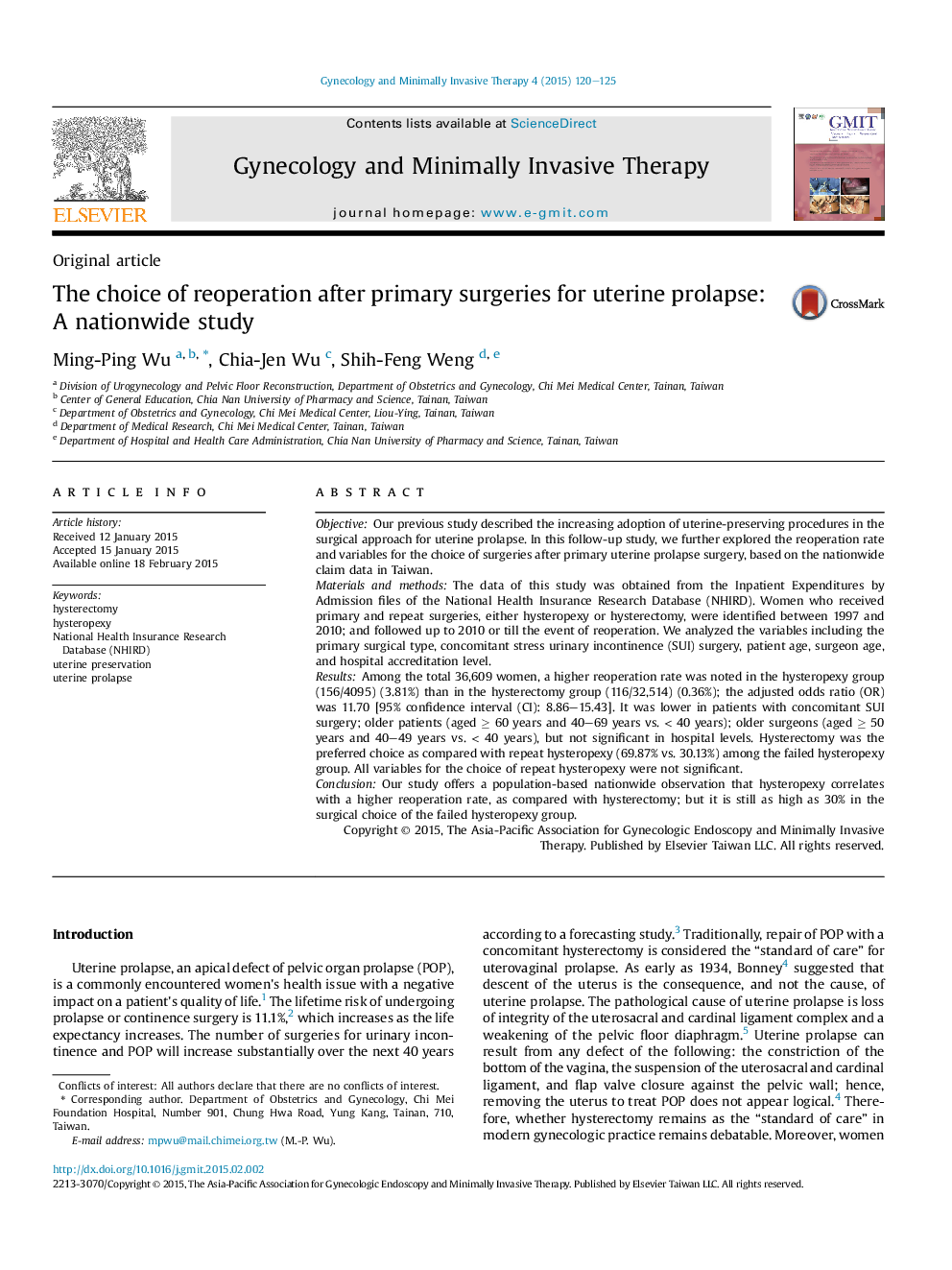| Article ID | Journal | Published Year | Pages | File Type |
|---|---|---|---|---|
| 3951998 | Gynecology and Minimally Invasive Therapy | 2015 | 6 Pages |
ObjectiveOur previous study described the increasing adoption of uterine-preserving procedures in the surgical approach for uterine prolapse. In this follow-up study, we further explored the reoperation rate and variables for the choice of surgeries after primary uterine prolapse surgery, based on the nationwide claim data in Taiwan.Materials and methodsThe data of this study was obtained from the Inpatient Expenditures by Admission files of the National Health Insurance Research Database (NHIRD). Women who received primary and repeat surgeries, either hysteropexy or hysterectomy, were identified between 1997 and 2010; and followed up to 2010 or till the event of reoperation. We analyzed the variables including the primary surgical type, concomitant stress urinary incontinence (SUI) surgery, patient age, surgeon age, and hospital accreditation level.ResultsAmong the total 36,609 women, a higher reoperation rate was noted in the hysteropexy group (156/4095) (3.81%) than in the hysterectomy group (116/32,514) (0.36%); the adjusted odds ratio (OR) was 11.70 [95% confidence interval (CI): 8.86–15.43]. It was lower in patients with concomitant SUI surgery; older patients (aged ≥ 60 years and 40–69 years vs. < 40 years); older surgeons (aged ≥ 50 years and 40–49 years vs. < 40 years), but not significant in hospital levels. Hysterectomy was the preferred choice as compared with repeat hysteropexy (69.87% vs. 30.13%) among the failed hysteropexy group. All variables for the choice of repeat hysteropexy were not significant.ConclusionOur study offers a population-based nationwide observation that hysteropexy correlates with a higher reoperation rate, as compared with hysterectomy; but it is still as high as 30% in the surgical choice of the failed hysteropexy group.
